
Estimated reading time :
April 18, 2025 6:25 am
Identifying Premium Amethyst- BUYER’S GUIDE
Writer’s Name :
Date of Publishing :
Writer’s Name :
Arya
Estimated reading time :
If you are looking forward to making an amethyst collection, or let’s say any other stone collection as well, there are certain things you need to be aware of before buying. We are going to tell you about all the things to look for before buying your amethyst stone. Consider this article as a typical collector’s guide to amethyst stones lovers.
To choose the perfect amethyst gemstone for yourself, you need to understand the factors that affect its quality. The 4 C’s of gemstones (color, clarity, cut, and carat) majorly influence the quality of the stone and pretty much tell us everything about it.
Let’s dive deeper into the 4 C’s of amethyst:
- Color: Color is one of the most important factors in determining the quality and value of an amethyst. We all know that amethyst is a beautiful purple stone, but that’s not enough to judge. We cannot say that it is a good amethyst just because it’s purple. Color is often analyzed deeply as hues, tones, saturation, etc. High-quality amethyst often has a rich, deep purple color that is uniformly distributed among the stone. On the basis of color, the type of amethyst that tops all is the Siberian amethyst. Siberian amethysts are considered to be top-quality amethysts from Siberia because of their deep red and blue tones mixed with purple. These are one of the most expensive varieties of amethyst to exist.
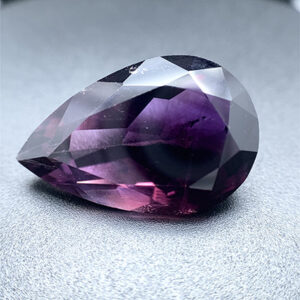
- Clarity: Gemstones often come with inclusions or impurities within them. A stone is considered to be of high quality when it has fewer inclusions and is clear. In the gemstone world, we often consider an “eye-clean” stone to be of good quality. By eye-clean, we mean that little to no inclusions are available to the naked eye. Often in amethyst you can find these inclusions:
- Feathers—they are also called fingerprints. They are generally fine-feather-like lines inside the stone.
- Smaller crystals—Generally, crystals like quartz have a habit of growing around other crystals, and sometimes amethyst crystals can also include such crystal inclusions.
- Needles—Silk-looking needles are often found inside this stone.
- Pinpoints—These are comparatively less common and are often found inside synthetic amethyst.
- Intended natural—While cutting gemstones, the cutter encounters a ‘pit’ in the stone that occurs naturally during the formation of the stone. If you see this ‘pit,’ it’s because the cutter tries to keep the ‘pit’ without actually disturbing the stone’s shape.
- Cavity—It is another common type of inclusion that often occurs when a cutter plays safe and tries to maintain the design. Cavity can also happen when another type of inclusion falls out while polishing or cutting.
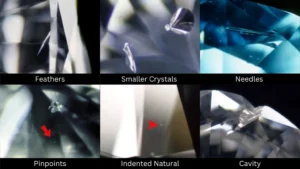
- Cut: The cut of a stone adds to its appearance and makes it look more royal and desirable. Hence, a good cut is also a factor that influences its price. This purple stone is ranked a 7 on the Mohs scale, which means that it is a pretty durable stone. Due to its hardness, it makes it easier to give the stone various kinds of cuts. This makes the stone versatile and suitable for various kinds of jewelry. You can know more about the different kinds of cuts here, and choose the perfect one for your jewelry.
- Carat Weight: This beautiful stone comes in various weights, typically ranging from 8 to 12 carats. This is the most common carat range so that it is easy to style in jewelry. Larger pieces can be really expensive because of their rarity and weight.
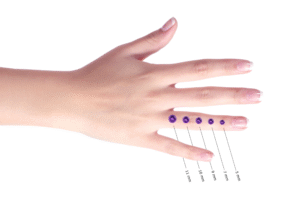
This was about the 4 C’s that you always need to look out for when you are buying this February birthstone.
You should keep in mind the following points that will help you in identifying real amethyst & avoid imitation ones.
- Color examination: A real amethyst has a rich purple color along with red, blue, and pink undertones. You can put your stone under natural light and see the color range that it displays. A natural amethyst will show a varying range of purple shades along with some color zoning. Whereas, an imitation amethyst is overly saturated and lacks color depth.
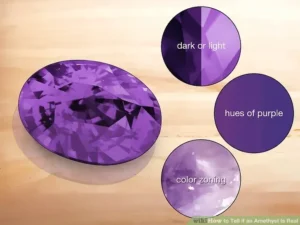
- Thermal conductivity test: In this test, heat up a safety pin and try to put it across the stone. If the stone is genuine, then it will retain the heat for a longer time than the synthetic one.
- Hardness test: This purple stone is a 7 on the Mohs hardness scale, which means that it won’t scratch easily. You can use a sharp object and try to scratch it; if it easily gets scratches, then it’s probably fake & this is the most common way of differentiating between genuine vs fake amethyst.
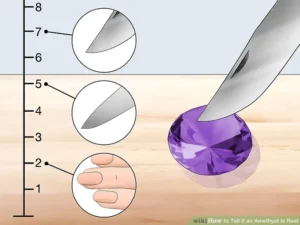
- Professional testing: You can get your amethyst stone lab tested by a professional. They generate an accurate report telling the authenticity, origin, and grading of the stone, which can help you learn better about your stone.
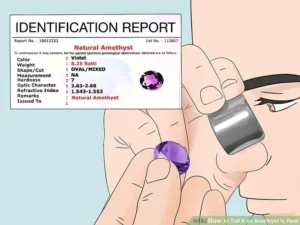
These are some of the most common ways with which one can check whether their amethyst is real or fake. We hope this buying guide for amethyst gemstone helps you to differentiate easily and pick the right stone for yourself.
You may also like


